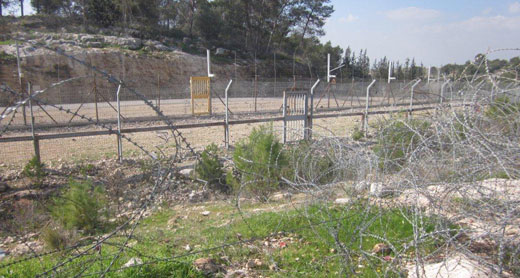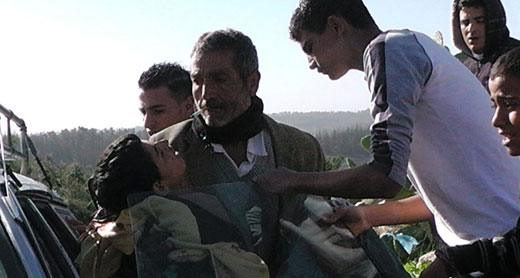B’Tselem inquiry: No justification for shooting and killing Samir ‘Awad, 16. Budrus, 15 Jan 2013
B'Tselem
 |
February 27, 2013
On the morning of Tuesday, 15 January 2013, after his last examination before school’s mid-year break, 16-year-old Samir 'Awad of the village of Budrus, went along with a few friends to the Separation Barrier south-west of Budrus, about 300 meters from the school. B’Tselem Field Research Iyad Hadad gathered testimony from several of the teenagers, one of whom watched from a distance. According to their testimonies, the boys planned to throw stones at military patrols along the fence, as teenagers in the area often do. They said that when they approached the Separation Barrier, they saw that one of its gates was open. Therefore, they thought that soldiers must be nearby and tried to find them. The Separation Barrier is made up of a primary fence and secondary rows of barbed wire around it. The barbed wire is meant to prevent access to the primary fence, but near Budrus there are several openings in the barbed wire. One boy went through a makeshift opening in the first barbed wire fence, saw nothing, and came back out. Samir 'Awad then went through the opening alone, and continued on to the primary fence.On 15 January 2013, 16-year-old Palestinian Samir 'Awad was killed by live ammunition that Israeli soldiers fired at him near the Separation Barrier at Budrus. A B’Tselem inquiry reveals that the soldiers were not in danger at any time. Nevertheless, and in total contravention of open-fire regulations, they shot 'Awad three times.  Photo of the Separation Barrier near where Samir 'Awad was killed. Photo: Naomi Betzer Military sources told the media that Israeli soldiers of the 71st Armored Corps Battalion were concealed in a nearby ambush. B’Tselem’s inquiry shows that the soldiers were on the side of the Separation Barrier facing Budrus. According to the information that B’Tselem collected, when Samir 'Awad was between the barbed-wire fence and the main fence, four soldiers appeared on the scene and the other teenagers fled to the village. At this point, 'Awad apparently tried to run away, but was caught between the two fences. The soldiers called for him to stop and fired in the air. Then they shot at his leg while he was trying to flee. He was wounded and fell to the ground, but when he tried to continue running, the soldiers shot him again. He was wounded by a bullet in the back and a bullet to the head.
According to media reports in Hebrew, the initial investigation by the Israeli military found that 'Awad was shot in contravention of open-fire regulations. The reports also stated that there were contradictions among the soldiers’ versions.
Open-fire regulations permit soldiers to use live ammunition only in cases of real and immediate mortal danger. In this instance, the soldiers were clearly in no danger whatsoever. Firing live ammunition at a fleeing person whose back is to the soldiers and who poses no immediate danger whatsoever, is unlawful and in complete contravention of open-fire regulations. Moreover, the soldiers were at the scene for the express purpose of catching stone-throwers. Therefore, they should have prepared for action against unarmed youths and been ready with crowd control weapons, not live ammunition. Samir 'Awad being evacuated from the scene after being shot. Photo: Nasar Mghar In accordance with the policy instituted by the Military Advocate General in April 2011, that a Military Police investigation be opened in every instance when a Palestinian civilian is killed in the West Bank by Israeli soldiers, the MAG Corps announced on the day of the incident that an investigation has been opened. In addition, the media has reported that the Israeli military has detailed video footage of the incident. B’Tselem stresses that the authorities are obligated not merely to open an investigation, but also to ensure that it is timely and effective. The longer the investigation takes, the greater the danger that evidence may be lost and that witnesses’ recollections become less sharp, thereby seriously damaging the principle of the rule of law and the deterrent effect against similar violations. B’Tselem has conveyed to the Military Police Investigations Unit all the information it has on the incident. It awaits the conclusion of the investigation and a prompt decision by the MAG Corps regarding an indictment. Source |
No comments:
Post a Comment